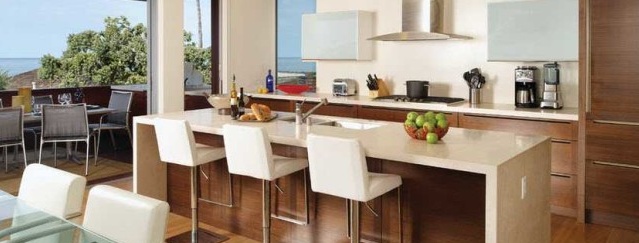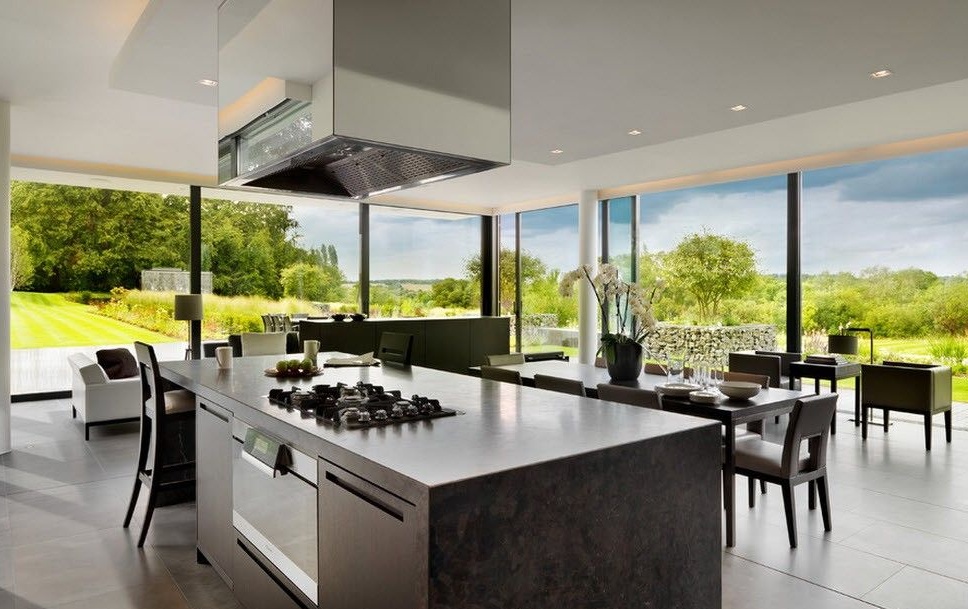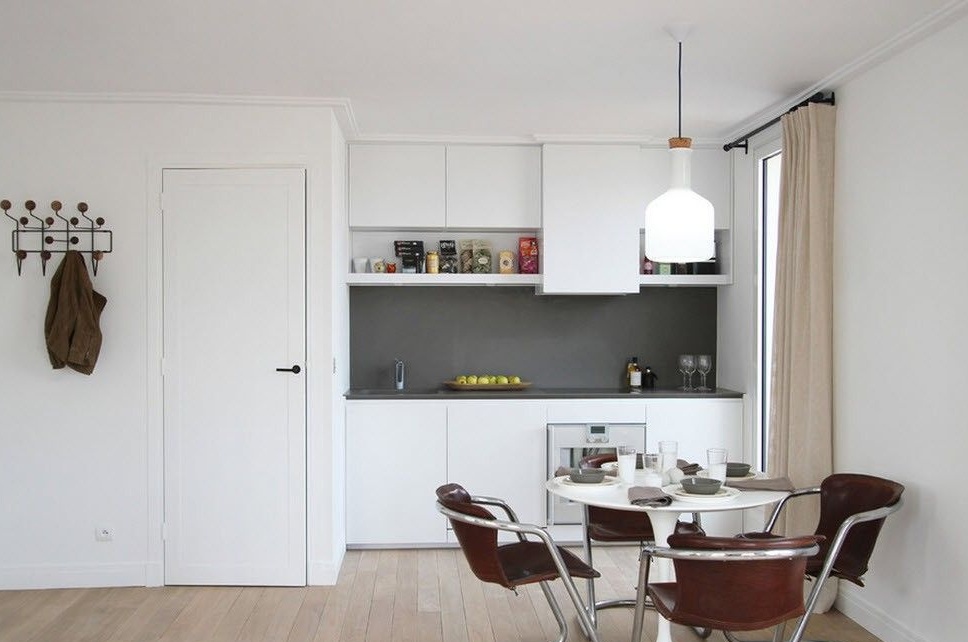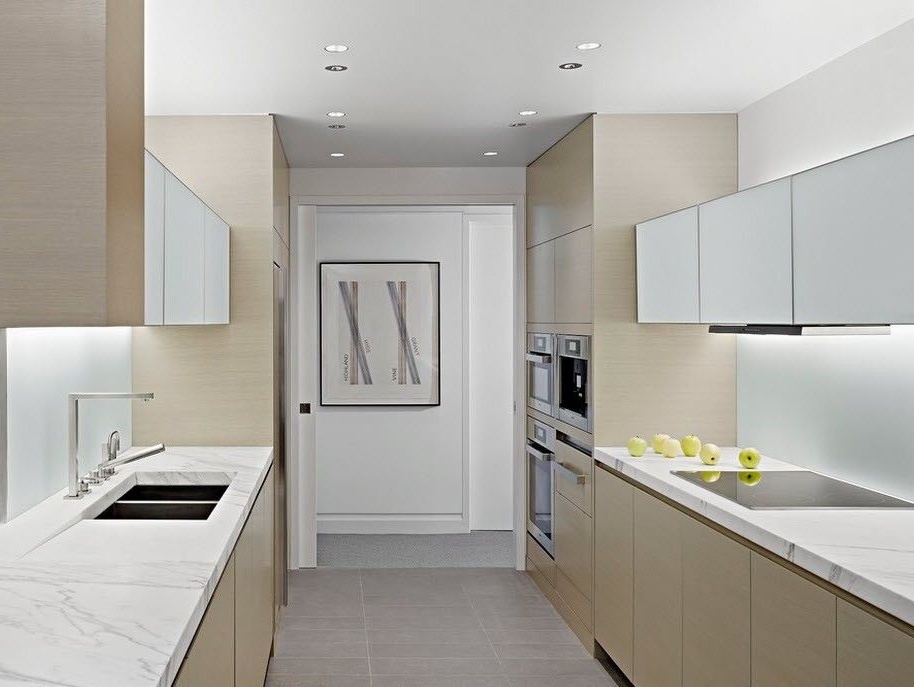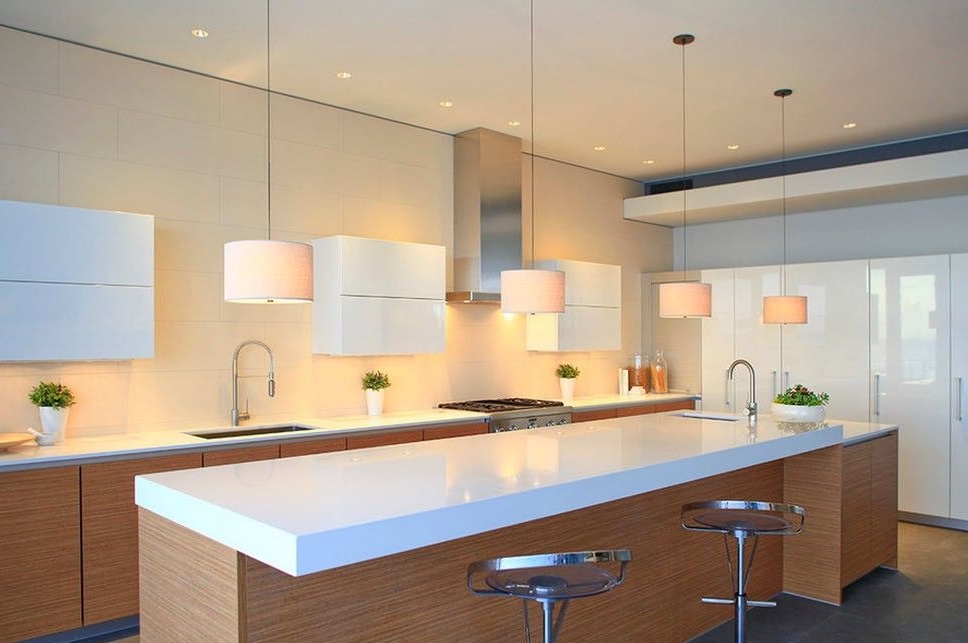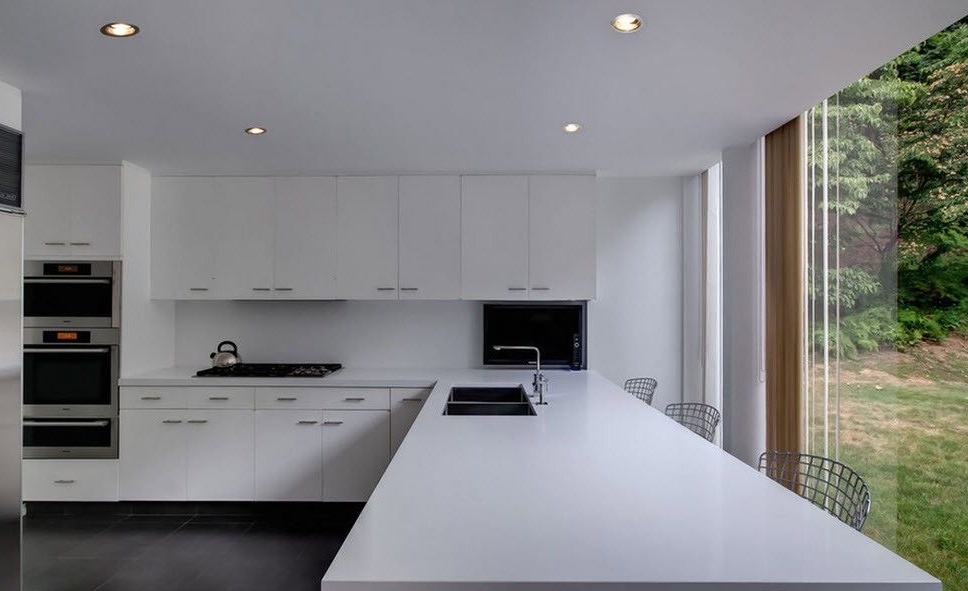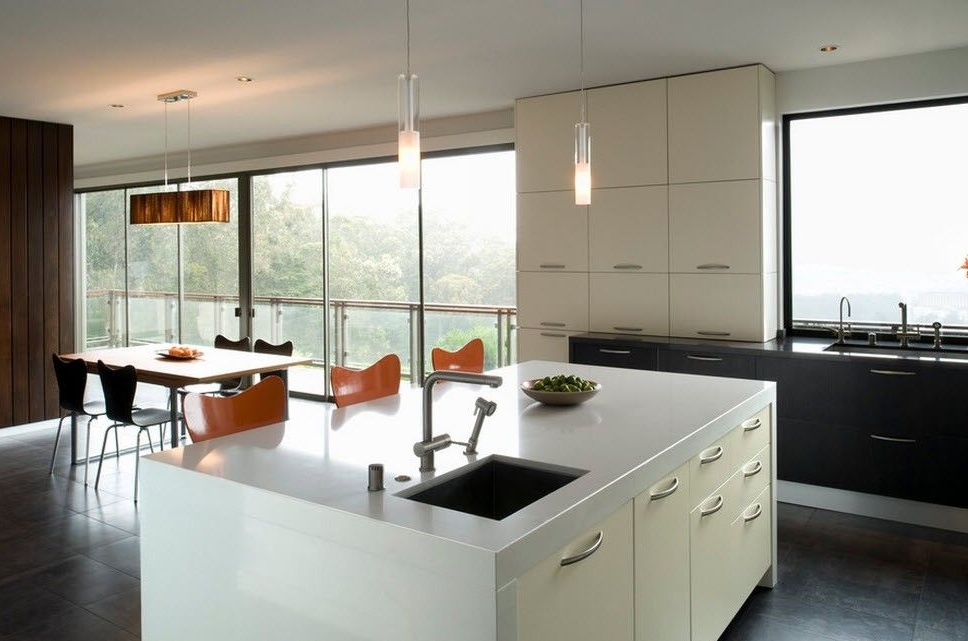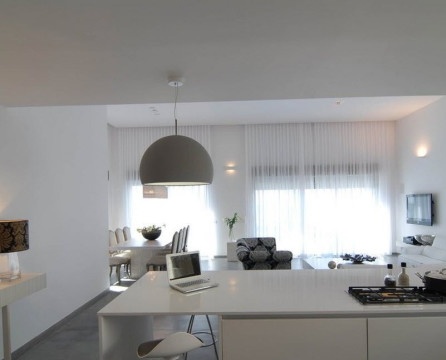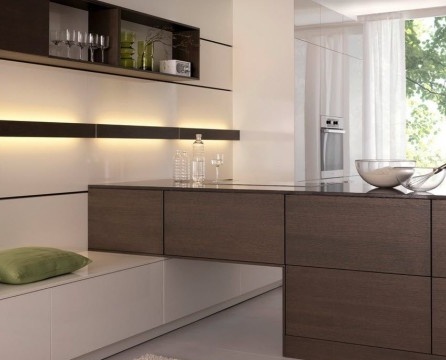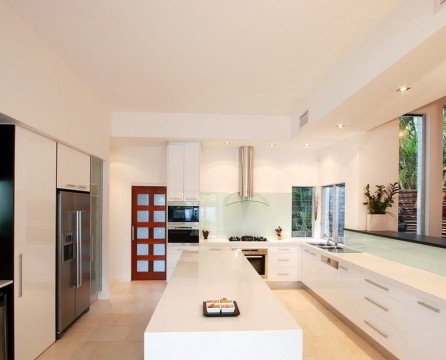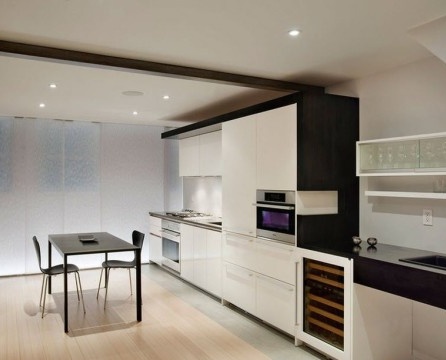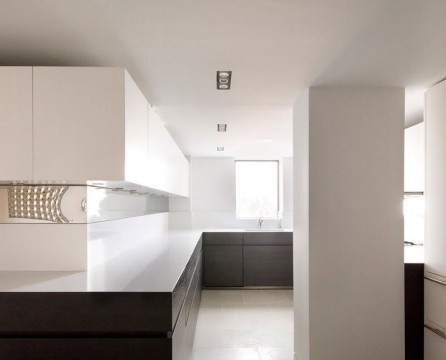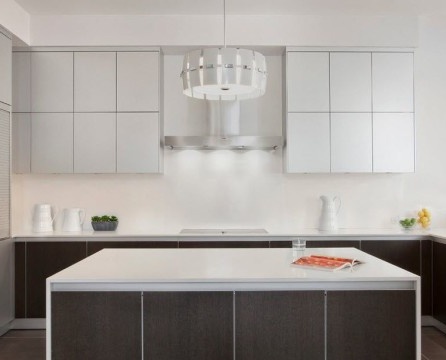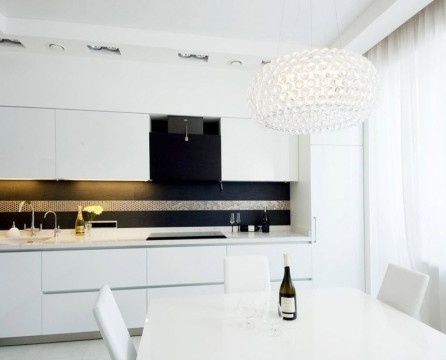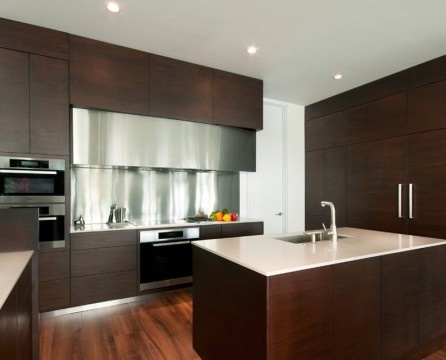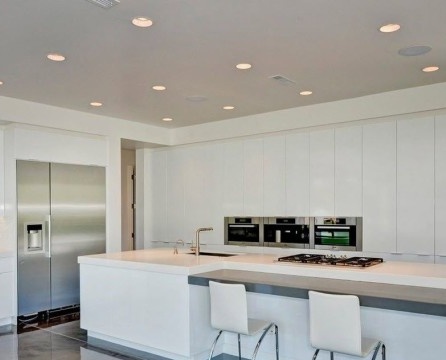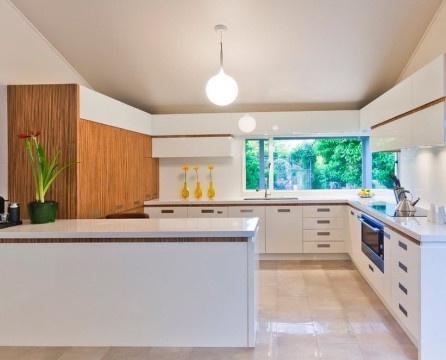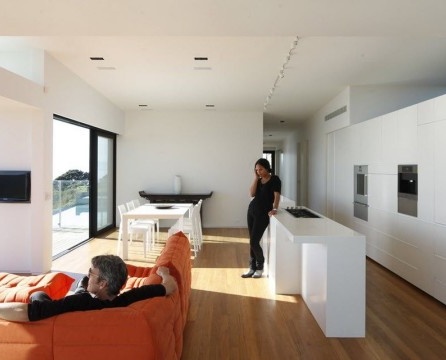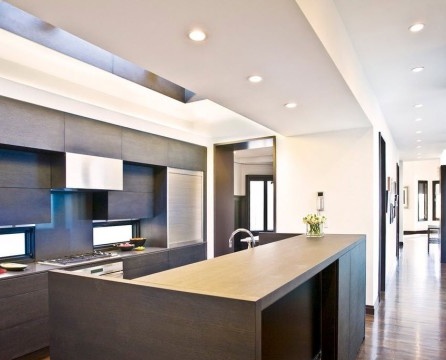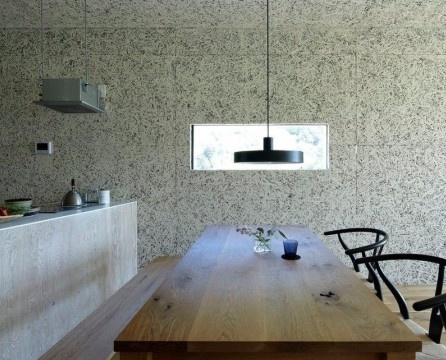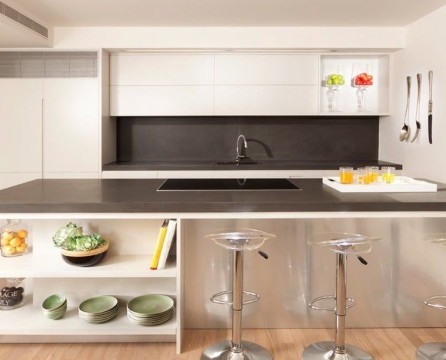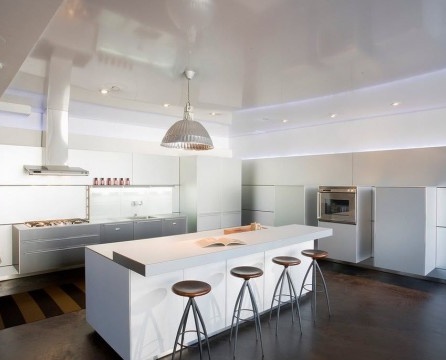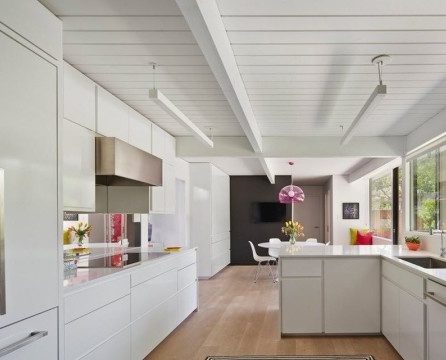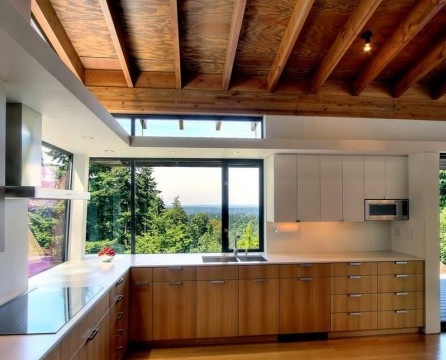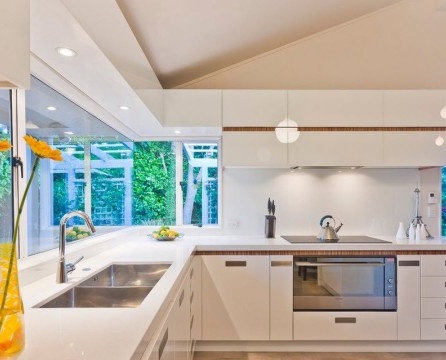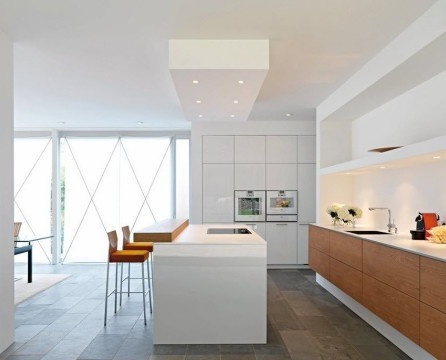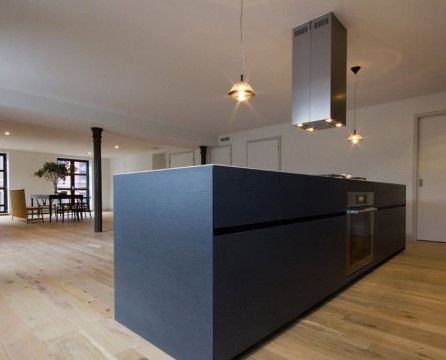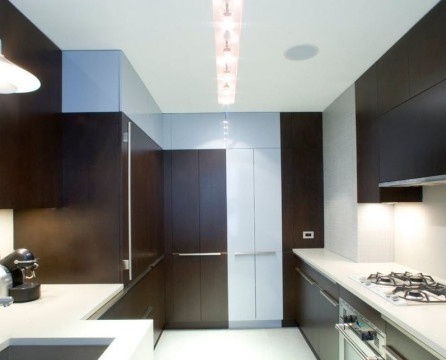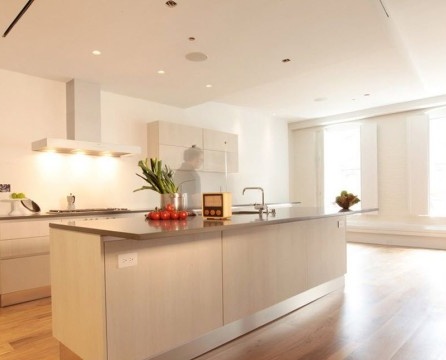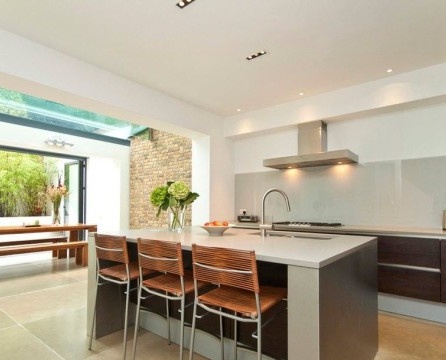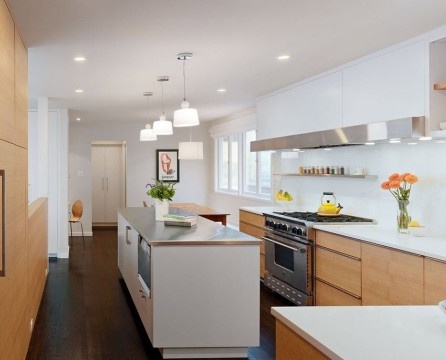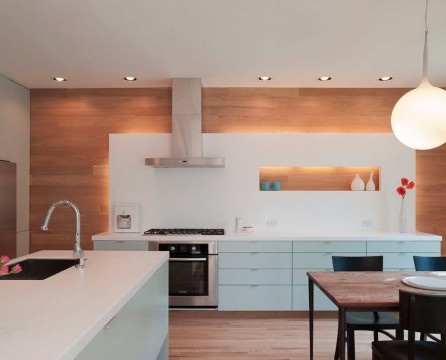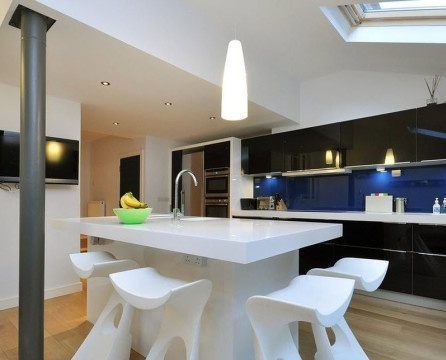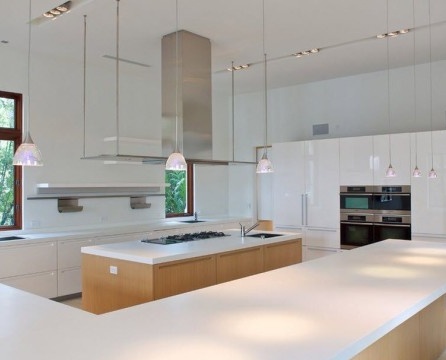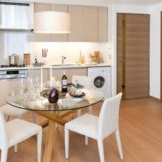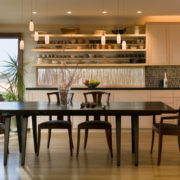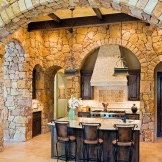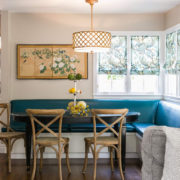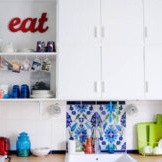Minimalism style kitchen: maximum simplicity for organized people
Probably the very first minimalist style kitchen was built in a cave, where there was nothing around the flaming hearth, except scattered small boulders as seats for miners who deserved a hearty meal. With the development of civilization, mankind has overgrown with a large number of useful household items (and even more useless items), and gradually, reaching the twentieth century and tired of thingism, they invented a new style of home decoration - minimalism.
Surprisingly, minimalism in interior design has become very popular. Direct, simple geometric forms based on accurate engineering calculations, the dominance of achromatic colors with expressive bright accents (in the form of coloring an apron, dishes, decoration elements minimized) or a calm monochrome version, a small number of constituent elements, a significant amount of free space, fill the room an atmosphere of elegance and modernity. Minimalist style is relevant for compact spaces as well as for large areas.
Square meters and the configuration of the room determine the way the furniture is arranged. In a small kitchen, one wall is filled with furnishings, the window remains free.
If there is a room in the form of a pencil case with a window located at the end, the furniture is placed along two walls, then the “central” part of the kitchen will become a “free” and passage area.
In the L-shaped kitchen there are more means to allocate separate zones for cooking and eating.
In a spacious room, most often square or rectangular, a U-shaped arrangement of furniture and equipment is used (along 3 walls). Are free areas of access to all elements of the interior.
Work complexes of the "island" type are very popular in large areas. In the center of the room is a pedestal table with a stove and sink integrated into the work surface. Often, drawers of a rather large volume are built into the table for storing dishes, cutlery, household appliances are built in, water supply is supplied. The island is also used for zoning.
A compact modification of the "island" is the layout of the "peninsula", in which the end part is connected to the wall.
Many interior designers have joined the followers of the minimalist trend, and as a result created interesting designs that are aesthetically attractive and functional. All elements of the interior are combined into a single whole according to the formula "everything is part of everything", their redundancy and repeatability are excluded. The main advantages of style are spaciousness, order and cleanliness - the dream of any housewife. New materials began to be used, such as glass, acrylic, plastic, particleboard and MDF, steel and aluminum, which combine well with traditional natural wood, which now has an auxiliary, often decorative, role. Modern finishing materials with antibacterial properties, easy to clean, raised purity and accuracy to the cult. A modern kitchen behind closed facades holds many surprises. She generally became terribly smart, sometimes it even seems that she can be controlled telepathically. In a minimalist kitchen, where every superfluous detail violates the purity of style, the doors of cabinets and shelves are fitted with such usual accessories as handles. The technology of silently opening (closing) the door with a simple press (palms or knees, if the hands are busy), actuating convenient retractable mechanisms is called by the brand that developed it - Blum. This technology allows you to ensure the most rational arrangement of things in the kitchen, which are easy to reach or put in place. When closed, cabinet doors and shelves are held by magnetic force. When choosing chairs or stools, preference is given to products made of natural wood, metal, acrylic and polypropylene. Function and design - this dyad applies to the choice of household appliances. Of course, the idea to get by with a stove and a refrigerator is only suitable for the unsociable sole occupant of the apartment, but the landlady will also need a dishwasher, an oven, a microwave and an extractor fan. All this equipment necessary for a comfortable life is built into furniture and installed according to certain principles, where the main ones are free access and "everything is at hand." The main objects of the working area are usually located nearby - a hob, a sink with a sink (in the center) and a refrigerator. Hoods greatly simplified cleaning in the kitchen, taking on polluted fumes, grease, soot, unpleasant odors. They are usually placed above the hob, which coincides in size with the working surface of the hood. This is a direct function. There is still decorative. The design of modern hoods is so diverse that a good choice from:- domed (very stylish and powerful, suitable for large kitchens),
- built-in (mounted in a hanging cabinet, only the dashboard and filter grill remain visible),
- flat (very compact, because they do not come out unconnected with ventilation wells, are mounted on a wall above the stove or the lower plane of the cabinet),
- island (attached to the ceiling anywhere in the kitchen above the stove),
- telescopic telescopic (completely hidden and is used only during cooking, significantly save space)
- T-shaped (glass, stainless metal are involved in the manufacture, attached to a wall or ceiling, enrich the interior, making it complete).
- ceiling lights for general lighting of the space, when you need to flood light the entire volume of the kitchen;
- spot lighting for directional lighting of the desired area of the kitchen or object (modern systems allow you to adjust the brightness of the light flux) - working and dining areas (with dining table or bar);
- decorative lighting.
- brevity;
- structurally functional purism;
- accurate calculation of the placement of objects;
- contraction and synthesis;
- concentration;
- no frills;
- "opacity";
- cleanliness and order.

